Research farm teams up with the world
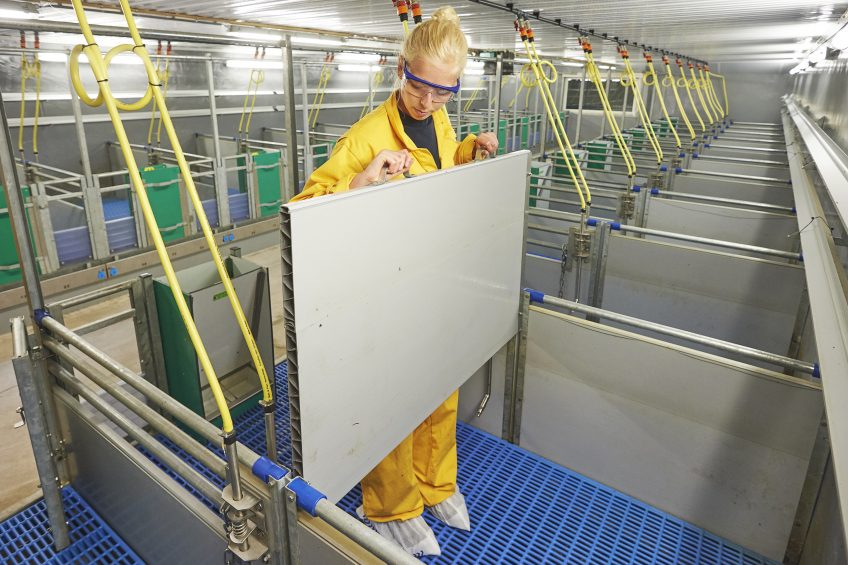
In a world that is increasingly connected, research has to reflect that. At Cargill’s Global Innovation Center in Velddriel, the Netherlands, each trial is connected to various others across the globe and is aimed at understanding effects on the entire pig.
Trials for the market in South East Asia? At the Cargill Global Innovation Center in Velddriel, the Netherlands, these are preferably carried out in winter, when outside temperatures can drop to below 0°C.
That is on purpose, explains Marc Decoux, global swine techonology lead at Cargill Animal Nutrition, who can call the research facility his second home together with the 6 other swine global researchers and technical experts located in the centre. For finisher pigs, the research centre has 2 identical rooms which can be thermoregulated. In the heated room, temperatures will then be gradually increased until roughly 32°C and a relative air humidity of over 80%. In the control room, ‘normal’ farm climate control will be applied, which in winter will be around 22°C and varying levels of humidity. He explains, “Should you do this in summer, then the difference between both sections may not be as obvious. That is why we usually choose to do this in winter.”
Add to this that different feed rations can be made on the basis of whichever feedstuffs is required – that includes South East Asian ingredients – and it’s fair to conclude that for trials under tropical conditions, even a North Sea climate is perfectly suitable.

International research efforts
The research facility in Velddriel may be located in the countryside in the Netherlands, yet it is the heart of international research efforts. As ‘Global Innovation Center’ it forms a key part of a network that has been built by the multinational animal nutrition company over the years.
The farm in Velddriel was acquired in 1982 by then feed additives company Provimi. Originally a poultry farm, the facility was converted into a trial facility for feed additives research and gradually expanded to house pigs, poultry and dairy cattle. When Cargill acquired Provimi in 2011, the Velddriel farm became part of a large network of research centres, also see the box A global network.

Ever since, the farm has been going through a transition, explains Peter Wijtten, the farm’s operation manager. He says, “The focus of research changed from being European minded to being focused on global pork production. Thanks to the large footprint we globally have in swine research there is more opportunity now to do more ‘ideation trials’ and fundamental work to really get insight in physiological processes in the animal and how we can influence these nutritionally. Also it is possible to carry out a campaign of experiments across multiple research units, hence using the strengths from both sides.”
Profile
|

Click here for more Farm Visits.
Marc Decoux adds, “When we look back at what we used to be doing then, we can say we are now looking at the holistic approach. Every part of the swine counts. It’s not only a question of what does one ingredient do in the small intestine for instance – no, it’s important to take the entire picture of the entire animal into view.”
Mr Wijtten says, “That is the advantage of having things big. We can combine so many different elements, that allows us really to paint the bigger picture.”
Biomarker research
Fundamental pig research at Velddriel concentrates on developing 5 different aspects, which are:
- Highest livability;
- Best transition, consistently;
- High precision nutrition;
- Leverage of digital technology;
- Micronutrition.
A good example of the type of research that is being done in Velddriel is a focus on biomarkers, i.e. trying to figure out at tissue and blood level what the effects may be of the addition or disappearance of a certain feed ingredient. In the past, trials would be carried out on one specific body part or performance trait, now with improved technology and wider knowledge, an animal’s blood can be tested for more details. That way researchers can learn about what nutrition is doing inside the animal.
A global networkCargill’s network of R&D facilities for land animals are located in various places all over the world. Apart from Velddriel, fundamental research is also carried out in Elk River, MN, United States. The network is complemented by ‘Technology Application Centers’, where more applied trials are being done. Additional applied pig research centres are located in Brazil, Poland, Spain and China. In Elk River, US, pigs can be followed from birth through to slaughter. In addition, in Elk River intestinal cannulation can be performed. In total, Cargill performs 58 pig trials within its Global Innovation Centers. |
Into the buildings
Apart from facilities for dairy cows, poultry and ‘conventional’ gestating sow housing, the Global Innovation Center in Velddriel has four distinct facilities which are used for basic swine research.

Lactating sow facility
In total, the farm houses 140 sows. The sows themselves do not take part in the research trials, but are kept to produce offspring. In the gestating sow facility therefore, no research is going on; in the lactating area, the emphasis is on trials involving young piglets.
Especially the Cargill concept of ‘Neopigg Rescue Cups’ is being shown here: the addition of bowls with performance milk replacers, so every piglet has access to sufficient amounts of nutrients, even when there are more piglets than teats available. The piglets are usually also involved in preference trials.
Sow crates are large, with the sows positioned diagonally in the pen. The farm uses Topigs 20 sows, an easy-to-handle and relatively small-size sow, ideal for trial purposes. The farm uses a Top-Pi (Piétrain) sire line.
For biosecurity reasons, the lactation house requires the wearing of blue coveralls and boots which can be found at the entrance of the house. When leaving this facility, visitors will have to leave their coverall and boots – and continue their journey wearing a blue basis suit.
Upcoming: The Shield conceptSeveral works coming from Velddriel were foundational for the Shield concept: a series of trials carried out on protein helped to better control the fermentation of proteins in the intestine, a key driver for gut health. Based on this, Cargill developed new formulation concepts (SW GUT FP) and functional ingredients like Provisoy. Another series of trials is helping us to understand the mode of action of therapeutic zinc and its long term effects on piglet physiology and growth performance. This helped us to develop alternative strategies, in line with the future EU regulations. |
Nursery facilities
Piglets are weaned at on average 21.7 days. After weaning the animals go to one of the 2 on-site nursery facilities (colour code: yellow). One facility has been on the farm for many years, the other, a more modern house, was completed in 2016. In the more facility, feed spilling, faeces and urine can be ‘caught’ by drawers underneath the slatted floors. This way it is possible to very accurately calculate all kinds of parameters, e.g. feed intake and feed conversion rates.
The older facility consists of two large rooms, one with 32 and one with 40 pens. It is possible to keep five simultaneous treatments here and have enough replicates to capture even small differences in performance.
In each pen, 6 piglets can be kept; the main focus of these facilities are to measure feed intake and BW-gain. The growers are kept on platforms that are about 50 cm higher than the floor. This allows animal technicians to pick up the animals ergonomically, without having to bend over too much.
The newer facility, called ‘Focus Unit’, cost €200,000 to build and is located at a different location at the Velddriel farm complex. It allows the researchers to do even more fundamental research. The key aspect is the flexible housing opportunity – pen sizes can be 6 animals per pen, but the sizes can be manually changed to have only 1 or 2 growers in it. The pens can easily be cut in half, because in each pen on both sides there is a water supply.
This way, it is easy to do blood, faecal, urine and tissue collection, as well as measuring individual feed intake. In addition, the focus unit also allows for challenge trials, for instance with E. coli leading to subclinical infections. This is administered to the piglets using a substrate which is inserted into a piglet’s mouth, after which on a detailed level it can be viewed which type of nutrition may or may not give the right response.

Finisher facility
At around 25-30 kg and about 64 days of age, the pigs will be moved to the finisher facility (colour code: red), consisting of 48 pens. There can be four animals per pen, but as the animals grow older, one is usually taken out. They are trained to come out of their pens when the box doors are being lifted up. In addition, loin depth and back fat can be measured using an ultrasound scanner.
Using this method along with measuring feed intake and growth of pigs, the effects of different types of feed can be measured, e.g. with different methods of processing, pelleting or formulating. In the end this helps answer the question of what is best for each pork producer individually, whether he’s aiming for e.g. quicker growth or the best economic value.
It is here as well where the climate trials can be carried out, as described in the initial paragraphs.
After having reached a weight of roughly 115 kg, the pigs are being to known slaughterhouses in the area in the Netherlands or Germany. If required in specific cases, the researchers are allowed to observe and test additional parameters here, to know the effects of certain nutrition strategies on carcass quality.
Join 18,000+ subscribers
Subscribe to our newsletter to stay updated about all the need-to-know content in the pigsector, three times a week. Beheer
Beheer
 Name: Peter Wijtten, 48, operations manager, Global Innovation Center.
Name: Peter Wijtten, 48, operations manager, Global Innovation Center.
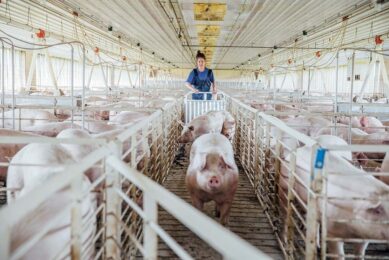
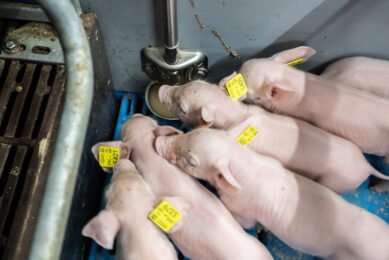
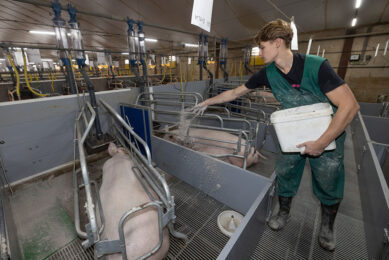
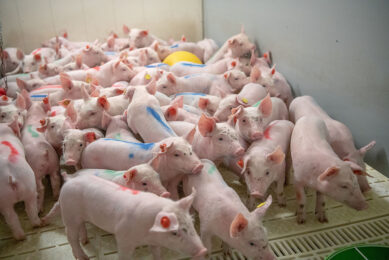





 WP Admin
WP Admin  Bewerk bericht
Bewerk bericht